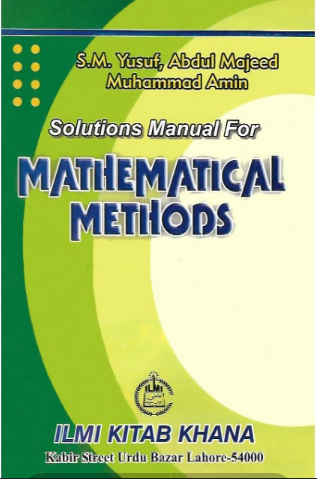What is Methods of Mathematical Physics?
Methods of Mathematical Physics is a specialized branch of applied mathematics that focuses on the mathematical techniques used to model and solve problems in physics. It combines analytical tools and mathematical structures to understand physical systems in areas like mechanics, electromagnetism, quantum theory, and thermodynamics.
Key Concepts:
Differential Equations: Used to describe physical laws such as motion, heat flow, and wave propagation.
Fourier Series and Transforms: Tools for analyzing periodic functions and signals in time and frequency domains.
Laplace and Poisson Equations: Fundamental in electrostatics, fluid flow, and potential theory.
Eigenvalue Problems: Arise in quantum mechanics and vibration analysis.
Special Functions: Functions like Bessel, Legendre, and Hermite functions used in solving physical models.
Green’s Functions: Solutions that represent the response of a system to a point source.
Separation of Variables: A technique to reduce partial differential equations into simpler ordinary ones.
Applications:
Quantum Mechanics: Solves the Schrödinger equation and models atomic behavior.
Electromagnetism: Describes electric and magnetic fields using Maxwell’s equations.
Heat Transfer and Fluid Dynamics: Models temperature flow and fluid motion.
Acoustics and Wave Theory: Analyzes sound and vibration propagation.
General Relativity and Cosmology: Explores spacetime and gravitational fields using tensor calculus.
Methods of Mathematical Physics provides a powerful mathematical foundation to model, analyze, and predict complex physical systems across scientific disciplines.

Techniques in Applied
Khadid Latif

Mathematical Method
Z R bhatti

Mathematical Method
Z R bhatti
Methods of Mathematical Physics Notes
